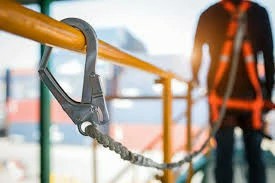


 349,500 Offered Certificates
349,500 Offered Certificates
 24/7 Online Training
24/7 Online Training
 Money Back Guarantee
Money Back Guarantee
 Fully Accredited Courses
Fully Accredited Courses

Created at: 22-02-2025 16:35
Working at heights presents undeniable safety risks, with falls being among the leading causes of workplace injuries and fatalities. Proper training is essential to prepare workers for the associated dangers and to protect them from harm. In this post, we will delve into the main hazards of working at heights, explore fall protection systems, and highlight emergency response planning. Additionally, we will showcase real-life case studies where training played a crucial role in preventing accidents.
The term “working at heights” generally includes any task performed elevated above ground level, such as roof work, construction tasks, or maintenance activities on tall structures. The following are the typical safety risks associated with this type of work:
Proper training plays a pivotal role in mitigating the dangers associated with working at heights. Here are several ways that Working at Heights training can prevent accidents:
Fall protection systems are critical for ensuring safety at heights. These may include:
The impact of Working at Heights training is evidenced through various case studies where proper preparation and knowledge have led to preventing tragic incidents:
At a construction site in Dublin, workers attended a Working at Heights course where they practiced the correct installation and inspection of scaffolding. During a routine operation, one worker noticed missing components in the erected scaffolding. Thanks to their training, they reported the issue and rectified it before any worker was placed in danger. This incident highlights the importance of proper training in identifying issues that could lead to serious injuries.
A major facility in Galway conducted a comprehensive Working at Heights Safety Course. In this training, workers underwent simulations of emergency situations, including falling from heights. A few weeks later, a worker did experience a slip while working at height. However, due to their training, they efficiently executed emergency protocols, and their colleagues provided immediate assistance, limiting the injuries.
In conclusion, the risks associated with working at heights are significant and cannot be overlooked. Implementing rigorous Working at Heights training is essential in preparing employees to understand hazards, utilize appropriate fall protection systems, and respond effectively in emergencies. With a certified Working at Heights course, companies can foster safety, reduce accidents, and comply with regulations. Enroll in a Working at Heights Certification Ireland program today, and contribute to a safer workplace!
For more information and to sign up for a course, visit our Working at Heights course page. For inquiries, please contact us at [email protected].